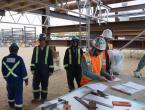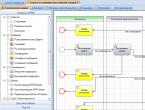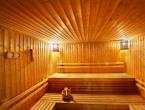Is the balcony included in the area of the apartment? Is the balcony included in the total area of the apartment or not? What is a balcony and loggia
When purchasing an apartment in a new building, the question often arises whether the area of balconies, loggias, and terraces is included in the total area of the apartment.
This question did not arise out of nowhere, some developers do not calculate the area of a balcony at all, some calculate it with a coefficient of 0.3%, others 0.5%, and there are those who calculate balconies at the full cost per square meter.
In order to most fully approach the answer to this question, let's break it down into its components:
- What does the Housing Code of Russia say about the area of balconies and loggias;
- What is written on this issue in the Construction Norms and Rules of Russia;
- Should the area of a balcony or loggia be taken into account when the developer evaluates the cost of an apartment?
- If the area of balconies and loggias is taken into account, should it be paid in the same way as other areas, or should a reduction factor be applied?
- Is the area of the loggia or balcony included in the total area of the apartment for payment of housing and communal services.
Here's what I managed to find out:
1. Housing Code of the Russian Federation(Federal Law No. 188-FZ of December 29, 2004, as amended on July 21, 2014 N 263-FZ, dated December 29, 2014 N 485-FZ, Article 15 states:
The total area of a residential premises consists of the sum of the area of all parts of such premises, including the area of auxiliary premises intended to satisfy citizens' household and other needs related to their residence in residential premises, excluding balconies, loggias, verandas and terraces .
As we can see from this document, balconies, loggias, verandas and terraces are not included in the total area of the premises. The Housing Code clearly states this.
Let's consider another document that is often referred to when calculating the total area of an apartment, these are the Building Regulations.
2. Construction rules - SP 54.13330.2011 “Residential multi-apartment buildings”.
Point 2.2. The total area of an apartment is the sum of the areas of its heated rooms and premises, built-in closets, as well as unheated rooms, calculated with reduction factors established by the rules of technical inventory.
* The area of the apartment and other technical indicators, calculated for the purposes of statistical accounting and technical inventory, upon completion of construction are specified according to the rules established in the “Instructions for accounting of housing stock in the Russian Federation”, approved by Order No. 37 of 04.08.98 of the Ministry of Land Construction of Russia.
Open the above Order.
Order No. 37 of the Federal State Statistics Service dated 08/04/98. “On approval of instructions on conducting accounting of housing stock in the Russian Federation”
3.37. The total area of the apartment is determined as the sum of the areas of its premises, built-in wardrobes, as well as the areas of loggias, balconies, verandas, terraces and cold storage rooms, calculated with the following reduction factors: for loggias - 0.5, for balconies and terraces - 0.3, for verandas and cold storage rooms - 1.0.
So, SP 54.13330.2011, referring to Order No. 37, says that balconies, verandas, terraces are included in the total area of the apartment, but with a reduction factor.
The same is said in the mandatory Appendix No. 2 to SNiP 2.08.01-89. Paragraph 2 of the Appendix states “The total area of apartments should be determined as the sum of the areas of their premises, built-in wardrobes, as well as loggias, balconies, verandas, terraces and cold storage rooms, calculated with the following reduction factors: for loggias - 0.5, for balconies and terraces - 0.3, for verandas and cold storerooms - 1.0.”
There is a discrepancy. The Housing Code states that balconies, loggias and terraces not included into the total area of the premises, and the Building Regulations, at the same time, state that they included into the total area, but with a reduction factor. In order to understand how to continue living with this, let’s answer the third question.
3. Should the area of a balcony or loggia be taken into account when the developer assesses the cost of an apartment?
The answer is, it should. After all, the developer spends building materials, effort and time on its production, and any work, as we know, must be paid for. This is exactly what is stated in SNiPs and SPs, as well as in the letter of the Ministry of Regional Development of the Russian Federation dated October 9, 2009 N 33350-IP/08.
4. Answer to the fourth question. If the area of balconies and loggias is taken into account, should it be paid in the same way as other areas, or should a reduction factor be applied?
We have already found out that we still have to pay for balconies and loggias. But we must pay for them not 100%, but with the reduction factors mentioned above.
Why is that? Why not free, as written in the housing code?
Because the Housing Code regulates the relationship between the operating organization and the owner of the apartment, and SNiPs and joint ventures regulate the relationship between the developer and the shareholder.
As we remember, SP 54.13330.2011 and SNiP 2.08.01-89 talk about reduction factors. That is, when putting an apartment up for sale, the developer must evaluate the area of the loggia with a coefficient of 0.5, the area of the balcony with a coefficient of 0.3.

5. The last question remains, whether the area of the loggia or balcony is included in the total area of the apartment to pay for housing and communal services.
Utility services calculate housing payments based on the total area of the premises. No odds. Why? Because the Housing Code clearly states that balconies and loggias are not included in the total area of the premises.
It is at this stage that apartment owners have many complaints against public utilities when balconies and loggias suddenly find themselves included in the total area of the premises.
But often, this is not the direct fault of the operating organization. They charge rent based on the documents you provide to them. That is, on the basis of a cadastral passport, which is issued to you after you have signed the transfer and acceptance certificate from the developer.
Therefore, it is necessary for the shareholder to understand that when signing the act of acceptance and transfer of the apartment, he himself must ensure that the document indicates the total area of the apartment without taking into account loggias and balconies.
With such an act, you can safely go to the registration chamber and register ownership of the apartment. You will receive a cadastral passport with the correctly calculated total area of the apartment, excluding loggias and balconies.
What to do if the developer insists that the transfer and acceptance certificate indicate the total area, including loggias and balconies?
You can sign such an act. But before you go to register an apartment, look at the Technical Inventory Bureau and ask for the correct technical passport of the apartment.
Since BTI specialists use the Housing Code in their work, they will correctly calculate the area for you, indicating the total area of the apartment without taking into account loggias and balconies.
With such a technical passport and acceptance certificate, you can already go to the registration chamber and register your property. The total area of the apartment will be prescribed to you according to the BTI plan.
I hope I was able to answer the question that plagues many people: is the area of balconies, loggias, terraces included in the total area of the apartment, and also whether the area of the balcony is included in the payment for utilities.
Real estate lawyer M.A. provided me with enormous assistance in compiling this material. Sidenko, for which special thanks to her!
If you have any questions on this topic, please ask them in the comments to the article.
How is the total area of an apartment calculated, including or excluding the loggia and balcony?
- area of the apartment (apartments);
Legal aspect - Whose property is the balcony?
Since the area of balconies, loggias and other verandas was excluded from the total area of the residential premises, although this area is indicated in the BTI explication for the apartment (with coefficients), their ownership is up in the air.
Lawyers' opinions were divided. Some argued that balconies, loggias and other unheated premises are common shared property, while others argued that the exclusion of their areas from the calculation of the total area of the apartment does not mean that the owners of the apartments lost the right of ownership to these premises themselves. After all, when the total area of the apartment included the area of balconies and loggias with reduction factors, this did not mean that the owners only owned 1/3 or 1/2 of this area.
Not so long ago, the Supreme Court of the Russian Federation, by its decision of November 9, 2011,
Is the balcony included in the total area of the apartment?
No. GKPI11-1727 resolved this dispute, establishing that:
Enclosing load-bearing structures, including balcony slabs, are included in common property as structural parts of a building, ensuring its strength and stability. Taking into account these technical features of these structures, balcony slabs meet the main characteristic of common property as intended to serve several or all rooms in the house.
Article 36 of the Housing Code of the Russian Federation defines the belonging of premises and other parts of the house to common shared ownership:
1. The owners of premises in an apartment building shall own, by right of common shared ownership, the common property in the apartment building, namely:
1) premises in this house that are not parts of apartments and are intended to serve more than one room in this house, including inter-apartment landings, stairs, elevators, elevator and other shafts, corridors, technical floors, attics, basements in which there are engineering communications, other equipment serving more than one room in a given house (technical basements);
2) other premises in this house that do not belong to individual owners and are intended to meet the social and everyday needs of the owners of premises in this house, including premises intended for organizing their leisure time, cultural development, children's creativity, physical education and sports and similar events;
3) roofs enclosing load-bearing and non-load-bearing structures of a given house, mechanical, electrical, sanitary and other equipment located in a given house outside or inside the premises and serving more than one room;
4) the land plot on which this house is located, with elements of landscaping and improvement, other objects intended for the maintenance, operation and improvement of this house and located on the specified land plot. The boundaries and size of the land plot on which the apartment building is located are determined in accordance with the requirements of land legislation and legislation on urban planning.
(as amended by Federal Law dated June 4, 2011 N 123-FZ)
As you can see, for property to be classified as common shared ownership, it must:
- was not part of the apartment;
- did not belong to a separate owner;
- intended to serve more than one room.
Based on this, the external walls and supporting structures of your apartment, floor, ceiling, communication and ventilation pipes are common shared property. And the space between them (that is, the apartment itself) is yours.
It’s the same story with a balcony (loggia, etc.). The balcony slab, fencing, facade wall are common shared property, and the space between them is the property of the owner of the apartment to which the balcony belongs according to the BTI explication.
This is how conditional property turns out.
And it doesn’t matter that the area of the balcony is not indicated in the certificate of ownership; in reality, you use it as a full-fledged owner, and it has no value separately from the apartment.
Inside this space of yours, you can show all your imagination, if this, of course, does not harm the common property, but do not forget about the Rules and Standards for the Technical Operation of the Housing Stock, approved by Resolution of the State Construction Committee of Russia dated September 27, 2003 No. 170.
(The article uses definitions from regulatory documents, as well as partially definitions and drawings from the article by Dubynin N.V. “Balcony or loggia?”, Housing Construction, No. 7, 2007.)
Fencing




BALCONIES, LOGGIAS | Constructive solutions for balconies | Complete Balcony Systems | Balconies and loggias | mybiblioteka.su - 2015-2018. (0.006 sec.)
Hello, regarding the essence of the question you asked, we can clarify the following.
The developer in the apartment agreement (participation agreement in shared construction and agreements arising from it, purchase and sale agreement) must indicate all the individualizing features of the property.
The contract provides a description of the apartment, based on the design documentation for the house.
The design and construction of multi-apartment residential buildings under construction are carried out on the basis of SNiP 31-01-2003 (residential multi-apartment buildings).
Does the total area of the apartment include a balcony?
3 Appendix B to SNiP 01/31/2003 provides terms and definitions of individual elements of the premises.
So, a balcony is a fenced area protruding from the plane of the facade wall. May be glazed. A veranda is a glazed, unheated room attached to or built into a building that has no depth limitation. A loggia is a built-in or attached room, open to the outside space, fenced on three sides by walls (on two sides in case of a corner location) with a depth limited by the requirements of natural light in the room to the outer wall of which it adjoins. May be glazed.
Appendix B to SNiP 01/31/2003 states that the area of the apartment and other technical indicators calculated for the purposes of statistical accounting and technical inventory are determined according to the rules established in the “Instructions for accounting of housing stock in the Russian Federation.”
The instructions on conducting accounting of the housing stock in the Russian Federation (hereinafter referred to as the Instructions) were approved by order of the Ministry of Land Construction of the Russian Federation dated August 4, 1998 No. 37.
By virtue of clause 3.34 of the Instructions, the following are calculated for each apartment, as well as for the building as a whole:
- living area of the apartment (apartments);
- area of the apartment (apartments);
- total area of the apartment(s).
According to clause 3.37 of the Instructions, the total area of an apartment is defined as the sum of the areas of its premises, built-in wardrobes, as well as the areas of loggias, balconies, verandas, terraces and cold storage rooms, calculated with the following reduction factors: for loggias - 0.5, for balconies and terraces - 0.3, for verandas and cold storerooms - 1.0.
Thus, the total area of the apartment when purchasing it will be determined taking into account the area of the balcony and loggia, but using coefficients of 0.3 and 0.5, respectively.
Payment for maintenance and repair of premises: is the area of the loggia or balcony taken into account when calculating the cost of the service? Explanations from utility workers
Housing and communal services / Tariffs for housing and communal services

And here’s the question: are balconies and loggias included in the area that is used to calculate fees for maintenance and repairs?
Is a balcony or loggia included in the total area of the apartment?
We are publishing clarifications from the Unified Settlement Center of Yekaterinburg (the city’s utility payments operator) on this issue.
Is the area of a loggia or balcony taken into account when calculating fees for the maintenance and repair of residential premises?
In accordance with Part 5 of Art. 15 of the Housing Code of the Russian Federation, the total area of a residential premises consists of the sum of the area of all parts of such premises, including the area of auxiliary premises intended to satisfy citizens' household and other needs related to their residence in residential premises, with the exception of balconies, loggias, verandas and terraces
Charges for the maintenance and major repairs of residential premises are carried out on the total area of the apartment (room), the area of the loggia or balcony is not taken into account.
What do we pay for under the line “fees for maintenance and repairs”?
Expert club /Questions for a lawyer
Ask a question | New questions | Become an expert | All answers
| HOA payment without details 08/21/2018 (Answers: 5) Is such a payment as in the application linked to legal? There are no details of where I am paying, no addresses, nothing. I give the money in person or by card to an individual who supposedly works in the HOA and receive such a receipt. What needs to be done and who to contact? Requirements for Management Companies when obtaining a license Elected chairman of the house without consent Non-residential premises (building) and contributions for the overhaul of apartment buildings Pipe corrosion in an apartment. How to force the Criminal Code to find the reason? Crediting a plastic window in a municipal apartment for utilities Downstairs neighbor unjustifiably sues for flooding Does the balcony count towards the total area of the apartment?What can she preprint and what measures should I take? Leasing HOA land to an individual Conflict with residents about the unloading location of a retail store between two apartment buildings Election of the board when creating a multi-building HOA |
Hello, regarding the essence of the question you asked, we can clarify the following.
The developer in the apartment agreement (participation agreement in shared construction and agreements arising from it, purchase and sale agreement) must indicate all the individualizing features of the property.
The contract provides a description of the apartment, based on the design documentation for the house.
The design and construction of multi-apartment residential buildings under construction are carried out on the basis of SNiP 31-01-2003 (residential multi-apartment buildings).
Clause 3 of Appendix B to SNiP 01/31/2003 provides terms and definitions of individual elements of the premises.
So, a balcony is a fenced area protruding from the plane of the facade wall. May be glazed.
Is the balcony included in the total area of the apartment or not?
A veranda is a glazed, unheated room attached to or built into a building that has no depth limitation. A loggia is a built-in or attached room, open to the outside space, fenced on three sides by walls (on two sides in case of a corner location) with a depth limited by the requirements of natural light in the room to the outer wall of which it adjoins. May be glazed.
Appendix B to SNiP 01/31/2003 states that the area of the apartment and other technical indicators calculated for the purposes of statistical accounting and technical inventory are determined according to the rules established in the “Instructions for accounting of housing stock in the Russian Federation.”
The instructions on conducting accounting of the housing stock in the Russian Federation (hereinafter referred to as the Instructions) were approved by order of the Ministry of Land Construction of the Russian Federation dated August 4, 1998 No. 37.
By virtue of clause 3.34 of the Instructions, the following are calculated for each apartment, as well as for the building as a whole:
- living area of the apartment (apartments);
- area of the apartment (apartments);
- total area of the apartment(s).
According to clause 3.37 of the Instructions, the total area of an apartment is defined as the sum of the areas of its premises, built-in wardrobes, as well as the areas of loggias, balconies, verandas, terraces and cold storage rooms, calculated with the following reduction factors: for loggias - 0.5, for balconies and terraces - 0.3, for verandas and cold storerooms - 1.0.
Thus, the total area of the apartment when purchasing it will be determined taking into account the area of the balcony and loggia, but using coefficients of 0.3 and 0.5, respectively.




